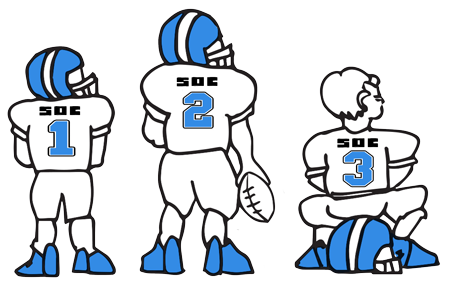ICFiles
SOC 2

Secure File Transfer Soc 2 starts at $1 per month
New Personal Finance Provisions in the 2.0 Secure Act
Financial Planning
July, 2023
New Personal Finance Provisions in the 2.0 Secure Act
 The Continuing Appropriations Act, enacted at the end of 2022, included several provisions that impact retirement plans going forward. Specifically, the legislation enacts SECURE 2.0, an updated version of the Setting Every Community Up for Retirement Enhancement Act of 2019. The following provisions are financial planning considerations that affect individuals.
The Continuing Appropriations Act, enacted at the end of 2022, included several provisions that impact retirement plans going forward. Specifically, the legislation enacts SECURE 2.0, an updated version of the Setting Every Community Up for Retirement Enhancement Act of 2019. The following provisions are financial planning considerations that affect individuals.
Increases Catch-up Contributions
Beginning in 2024, catch-up contributions to employer retirement plans made by employees who earn more than $145,000 a year (regularly adjusted for inflation) must be classified as after-tax Roth contributions. This is necessary for eligible plans to retain their tax-favored status.
Starting in 2025, catch-up contributions for participants ages 60 to 63 will increase from $7,500 to $10,000 per year for contributors in most qualified retirement plans. Beginning in 2026, the new catch-up contribution will be indexed to inflation.
Allows Employer Contributions to Roth 401(k)
Employers are now able to make post-tax contributions to a Roth option in an employee’s 401(k) plan. Employers also may open a Roth account option in SIMPLE, and SEP IRA plans for employees.
Expands Emergency Distributions from Retirement Accounts
Starting in 2024, there will be a new exception to the rule for early withdrawals from qualified retirement accounts. Distributions used for unforeseeable events, such as a personal or family emergency, will not be subject to the 10 percent early withdrawal penalty. However, the rule applies to only one distribution per year and only up to $1,000. The plan member has the option to repay the distribution within three years. Absent full repayment, no further emergency withdrawals may occur during those three years.
The provision also waives the withdrawal penalty on any amount for individuals certified by a physician to have a terminal illness.
Increases Age for Required Minimum Distributions (RMD)
Starting in 2023, the age that triggers required minimum distributions (and their requisite income tax liability) from qualified retirement accounts increases from 72 to 73. Starting in 2033, the trigger age raises to 75. The RMD rule apples to 401(k), 403(b) and 457(b) plans). Also, starting in 2024, Roth 401(k) accounts will no longer require RMDs.
Reduces Excise Tax on Noncompliant RMDs
If an investor is required to start taking minimum distributions and does not take out the required amount in a single year, he is subject to a tax on the amount not distributed. The tax used to be 50 percent, but starting in 2023, it was reduced to 25 percent. Moreover, if the account owner corrects the course and takes the full distribution within a certain window of time, the tax may be further reduced to only 10 percent.
Allows Emergency Savings Accounts
Starting in 2024, the legislation permits employers to offer an emergency savings account option within its retirement plan. The following provisions apply:
- Employee contributions are made with after-tax income
- There is an annual cap of $2,500
- Participants may make at least one withdrawal per month
- Up to four withdrawals per year are not subject to fees
- Emergency savings may be held in an interest-bearing cash-equivalent account
- Employers may match contributions, but those must be deposited to the participant’s retirement plan investment, not the emergency savings account.
- The emergency account is portable when the participant leaves the employer and can be rolled into a Roth-defined contribution plan or IRA
Permits Employer Match for Student Loan Payments
Presently – through 2025 – employers may contribute up to $5,250 (tax-free) a year toward worker student loan payments. Starting next year, employers have the option to classify those loan payments as contributions to the company retirement plan, such as a 401(k). This allows workers with student loans the opportunity to pay down that debt with their own income and still receive an employer match toward their retirement plan – so they don’t have to choose one or the other.
These articles are intended to provide general resources for the tax and accounting needs of small businesses and individuals. Service2Client LLC is the author, but is not engaged in rendering specific legal, accounting, financial or professional advice. Service2Client LLC makes no representation that the recommendations of Service2Client LLC will achieve any result. The NSAD has not reviewed any of the Service2Client LLC content. Readers are encouraged to contact their CPA regarding the topics in these articles.
Dynamic Content Powered by Service2client.com
SEO Content Powered by DynamicPost.net






